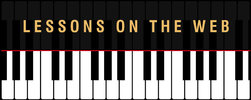|
We often hear and use the term Rhythm in our Piano playing…but if we had to, could we really define it? Meaning…do we really know what Rhythm is and what its role in music is? Let’s look at Rhythm is the supreme organizer or manager of notes. Without rhythm, notes wouldn’t have any structure to them at all…they would simply float randomly in space and time with nowhere to really “fit in”. The specific aspects of rhythm show us how to put notes together so that they make sense or in other words, say what the composer wants to say through them.
The second thing that you learn (or actually learn as you are mastering your time signatures) is the different counts that each type of note gets. These are called note durations.
So when you look at a piece of piano music, you can now understand why there are measure lines and a time signature at the beginning of each line. Sometimes, the time signature will change in a piece several times, so make sure to keep an eye out for that happening – especially as you advance in your own playing. As you can also see, learning rhythm is very important to playing the piano well. It’s important to practice rhythm from the very beginning because we start using it in our playing from the very beginning, even when we don’t realize it. Any piece that you play, even “Twinkle Twinkle Little Star” will have a time signature in it and measure lines that you have to play the right rhythm in. There are three specific ways that you can practice rhythm that will really help you learn it better and faster.
Check out the way I do this and the other two practice methods in the following video and you’ll be able to practice each one to compare how well you are doing it. If you like my tips and lessons, you will love the courses over on my website. Whether you are a beginner looking to get a solid foundation to build on or you are looking to take you existing skills to that next level, the online music courses on my website - https://www.pianolessonsontheweb.com will help you do just that.
Akmad M. Cog
6/27/2019 07:24:01 pm
I started some new lessons a few weeks ago I’m virtually ecstatic with how I’ve finally managed to play after a year of slogging away trying to learn to read music. I’ve given up on that and I’m really learning so quickly now by applying some simple tips:
Reply
Leave a Reply. |
AuthorMost blogs written by Archives
June 2020
Categories
All
|

 RSS Feed
RSS Feed